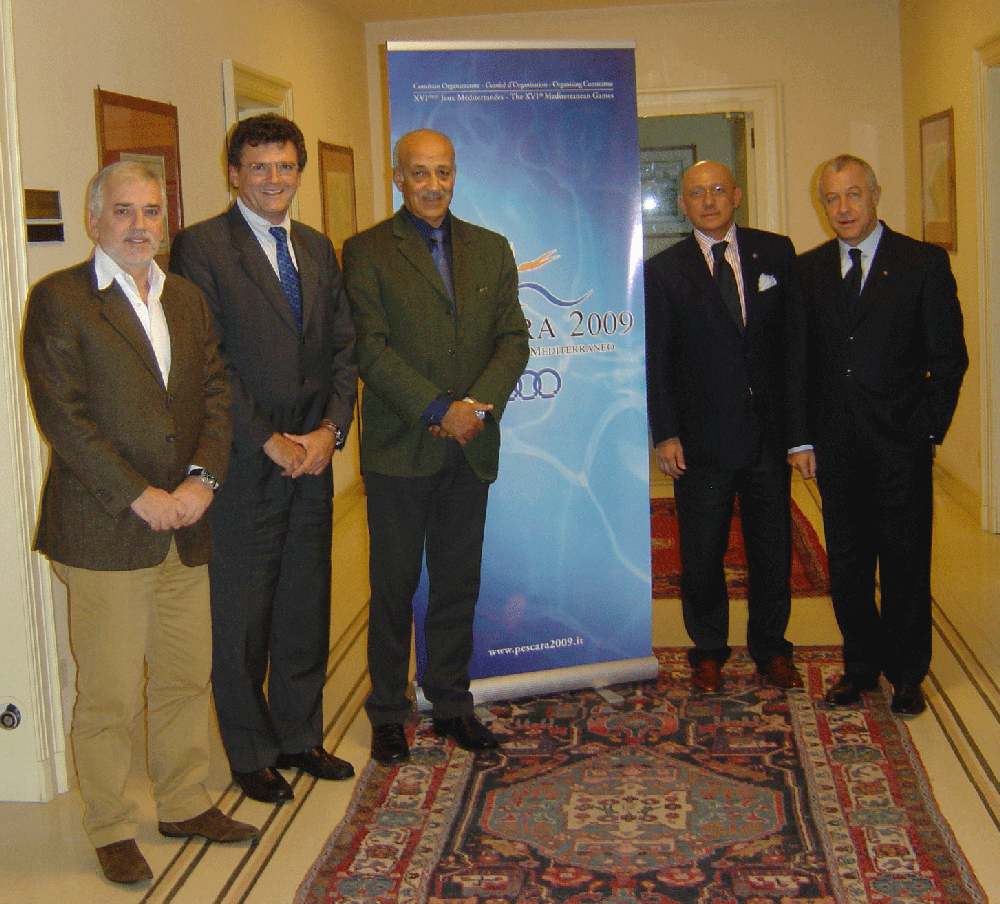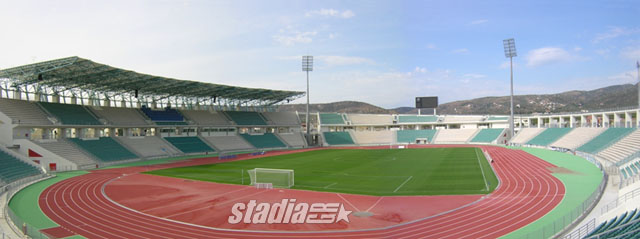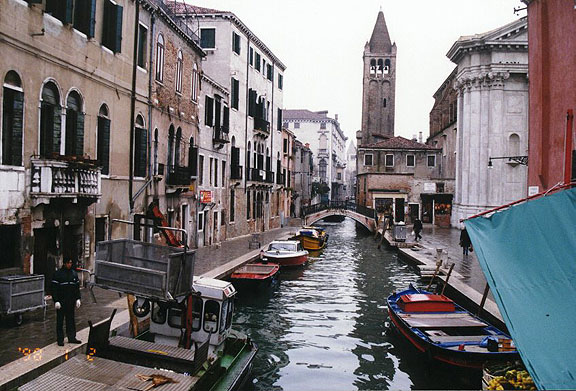2009年5月9日星期六
O Sole Mio
Torna a Surriento
"Torna a Surriento" is a Neapolitan song said to have been composed in 1902 by Ernesto De Curtis to words by his brother, Giambattista. The song was copyrighted officially in 1905; it has since become wildly popular, and has been sung by performers as diverse as Beniamino Gigli, Elvis Presley, José Carreras, Plácido Domingo, Luciano Pavarotti, Mario Lanza, Franco Corelli, Robertino Loretti, Giuseppe Di Stefano, and Francesco Albanese.
The song was supposedly written at the request of a friend of Giambattista's, Guglielmo Tramontano, who was mayor of Sorrento in 1902 when the prime minister of Italy, Giuseppe Zanardelli, stayed at his hotel in that town; it was claimed that the piece was meant to celebrate Zanardelli's stay. More recent research indicates that the song may merely have been reworked for the occasion; family papers indicate that the brothers deposited a copy with the Italian Society of Authors and Editors in 1894, eight years before they claimed to have written it.
Santa Lucia
Santa Lucia is a traditional Neapolitan song. It was transcribed by Teodoro Cottrau (1827–1879) and published by the Cottrau firm, as a "barcarolla", at Naples in 1849. Cottrau translated it from Napuletano into Italian during the first stage of the Risorgimento, the first Neapolitan song to be given Italian lyrics. Its transcriber, who is very often credited as its composer, was the son of the French-born Italian composer and collector of songs Guillaume Louis Cottrau (1797–1847).
The Neapolitan lyrics of "Santa Lucia" celebrate the picturesque waterfront district, Borgo Santa Lucia, in the Bay of Naples, in the invitation of a boatman to take a turn in his boat, the better to enjoy the cool of the evening.
The Three Tenors




The Three Tenors is a name given to the Spanish singers Plácido Domingo and José Carreras and the Italian singer Luciano Pavarotti who sang as a consort under this banner during the 1990s and early 2000s. The trio began their collaboration with a performance at the ancient Baths of Caracalla, Rome Italy, on July 7, 1990 – the eve of the 1990 FIFA World Cup final. Zubin Mehta conducted the Orchestra del Maggio Musicale Fiorentino and the Orchestra del Teatro dell'Opera di Roma.
They also opened their concern in China for several times.

Luciano Pavarotti Cavaliere di Gran Croce OMRI (12 October 1935 – 6 September 2007) was an Italian operatic tenor, who also crossed over into popular music.

José Plácido Domingo Embil KBE (born 21 January 1941),[1] better known as Plácido Domingo, is a Spanish tenor, known for his versatile and strong voice, possessing a ringing and dramatic tone throughout its range.

Josep Maria Carreras i Coll (born 5 December 1946, Barcelona), better known as José Carreras, is a Spanish Catalan tenor particularly known for his performances in the operas of Verdi and Puccini.
Famous Singer

Andrea Bocelli, GO OMRI. (born 22 September 1958) is an Italian tenor. To date, he has recorded seven complete operas (La bohème, Tosca, Il trovatore, Werther, Pagliacci, Cavalleria rusticana and Carmen) in addition to various albums in the classical, pop, and operatic pop genres. He has sold over 65 million albums worldwide
2006/10/15. He performed at the People Conference Hall in Beijing, China and on 17 October at the Great Hall in Shanghai.
2008.He sang a song with Chinese singer,Jane Zhang for 2008 Beijing Olympic Games.
The song name :Embrace in love and dream
URL:http://www.tudou.com/programs/view/W_7MidMv3PA/
Italy Music intro
The music of Italy ranges across a broad spectrum of opera and instrumental classical music, the traditional styles of the country's different regions, and a body of popular music drawn from both native and imported sources. Music has traditionally been one of the cultural markers of Italian national and ethnic identity and holds an important position in society and in politics. Italian innovation in musical scales, harmony, notation, and theatre enabled the development of opera in the late 16th century, and much of modern European classical music, such as the symphony and concerto.
Instrumental and vocal classical music is an iconic part of Italian identity, spanning experimental art music and international fusions to symphonic music and opera. Opera is integral to Italian musical culture, and has become a major segment of popular music. The Neapolitan song, canzone Napoletana, and the cantautori singer-songwriter traditions are also popular domestic styles that form an important part of the Italian music industry, alongside imported genres like jazz, rock and hip hop. Italian folk music is an important part of the country's musical heritage, and spans a diverse array of regional styles, instruments and dances.
The Christmas holiday




The Christmas in Italy
 The Christmas holiday season in Italy has already begun. All over Italy, you can see Nativity scenes, lights, trees, and other decorations. You may even find some Christmas Markets.
The Christmas holiday season in Italy has already begun. All over Italy, you can see Nativity scenes, lights, trees, and other decorations. You may even find some Christmas Markets. Christmas season in Italy is traditionally celebrated December 24-January 6, or Christmas Eve through Epiphany. This follows the pagan season of celebrations that started with Saturnalia, a winter solstice festival, and ended with the Roman New Year, the Calends. However there are lots of Christmas things to see during December prior to Christmas, many starting on December 8, the Feast Day of the Immaculate Conception.
Italian Christmas Traditions
Although Babo Natale (Father Christmas) and giving presents on Christmas are becoming more common, the main day for gift giving is Epiphany, the 12th day of Christmas when the three Wise Men gave Baby Jesus their gifts. In Italy, presents are brought by La Befana, who arrives in the night to fill children's stockings.
Christmas decorations and trees are becoming more popular in Italy. Lights and decorations are often seen starting around December 8, the Feast Day of the Immaculate Conception, or even the end of November. The main focus of decorations continues to be the presepe, Nativity scene or creche. Almost every church has a presepe and they are often found outdoors in a piazza or public area, too.
Traditionally, a meatless dinner is eaten on Christmas eve with the family, followed by a living nativity scene and midnight mass. In parts of southern Italy a seven fishes dinner is traditionally served on Christmas Eve. Traditional bonfires are often held on Christmas Eve in the main square of town, especially in mountain areas. Dinner on Christmas day is usually meat based.
New Year's Celebrations

Italians love festivals and the ending of the old year and beginning of the new year, il capodanno, is a great time to celebrate in Italy.
New Year's Eve in Italy - La Festa di San Silvestro
La Festa di San Silvestro is celebrated December 31 on New Year's Eve. As with most Italian festivals, food plays a major role. Families and friends get together for a huge feast. The star of the dinner is lentils, symbolizing money and good fortune for the coming year. Traditionally, the dinner in many parts of Italy also includes a cotechino, a large spiced sausage, or a zampone, stuffed pig's trotter. The pork symbolizes the richness of life in the coming year.
Fireworks and Dancing
Huge midnight fireworks displays celebrate the coming of the new year. Most towns have public displays in a central square but private parties will also include firecrackers or sparklers, too, and will continue for a long time. Naples is known for having one of the best and biggest New Year's fireworks displays in Italy. Some smaller towns build a bonfire in the central square where villagers will congregate into the early morning. If you're near the coast, lake, or river you will hear boats and ships blowing their horns.
Dancing is also popular and many towns have public music and dancing before the fireworks. Rome, Milan, Bologna, Palermo and Naples put on huge popular outdoor shows with pop and rock bands. These events can sometimes be seen on television, too.
More New Year's Eve Traditions in Italy
The New Year is also celebrated with spumante or prosecco, Italian sparkling wine. New Years parties, whether public or private, will often last until sunrise in order to watch the first sunrise of the newborn year.
An old custom that is still followed in some places, especially in the south, is throwing your old things out the window to symbolize your readiness to accept the New Year. So, keep an eye out for falling objects if you're walking around near midnight!
Venice Carnevale





Festival Location: Venice, Italy
Festival Type(s): Carnivals, Street Parades, Parties
Featured Festival: Venice Carnevale
The Carnival of Venice is one of the most ancient and charming venetian feasts. Rooted in the history and tradition of Venice, the Carnival is the most famous feast of Venice and it's considered by venetians and its hundreds of thousands of guests as an event not to be missed!It's a voyage of discovery into a fantastic and mysterious world, made of music, theatre, games and magic, where people from all over the world can experience the jokes, the masks and the mystery of playing hide and seek!
Festivals, Holidays, in Italy
Italy has interesting festivals every month of the year. Here is information about popular and unusual festivals in Italy listed by month as well as Italian holidays, annual special events, and music festivals. Attending a festival is a great way to experience Italian culture and enhance your vacation in Italy.
1. January
January starts with New Year's and Epiphany celebrations. Italian festivals in January include Feast Days of San Antonio Abate and San Sebastiano, Il Palio di Sant'antonio Abate, and the Fair of Sant'Orso, a woodcarvers fair, that's been held annually for about 1000 years.2. February
Carnevale, Italian carnival, tops the list of February festivals all over Italy. In Catania, Sicily, a big festival held on Saint Agatha's Feast Day is the second largest religious procession in the world. Other February Italian festivals include Saint Biago Day, Saint Faustino's Day, and an Almond blossom fair.3. March
Songs and chocolate highlight March festivals in Italy. Two interesting March festivals are the Marriage of Venice to the Sea and the Palio dei Somari, a donkey race held on Saint Joseph's Feast Day, also known as Father's Day in Italy. Spring festivals start in March and Easter sometimes falls in March, too.4. April
In April you'll find a frog race, Rome's birthday, the festival of San Marco, and Saint George's Day. There's an Italian national holiday on April 25 and Easter often falls in April. Food festivals are starting to be more plentiful, too.5. May
May in Italy is a good time to find spring festivals. You'll find flower festivals, food and wine festivals, medieval reenactments, and events celebrating rituals of spring. Unusual festivals include the Wedding of the Trees and the Snake Handlers' Procession. May Day is a national Italian holiday.6. June
Summer brings many festivals to Italy. Look for posters announcing a festa or sagra as you travel around Italy. Festa della Repubblica on June 2 is a national Italian holiday and the Feast Day of San Giovanni is celebrated many places in Italy. Some Italian towns have outdoor music concerts beginning in June, too.7. July
July is one of the best months for festivals in Italy. Sienna has its famous Palio and one of my favorites is the Festa de la Madonna Bruna. You'll find food festivals, medieval festivals, and lots of fireworks including the World Fireworks Championships. There are also many music festivals in July.8. August
Ferragosto (Assumption Day) is an Italian national holiday on August 15. In August you'll find local festivals throughout Italy, where you can often sample inexpensive regional food. Many Italians take vacations in August, often to the seaside, so you're more likely to find festivals there. You may run across a medieval festival that includes people dressed in medieval costumes. There are also many outdoor music performances in August.9. September
In September Italians return from their vacations. Many festivals take place the first Sunday in September as summer comes to an end. You'll still find local food festivals throughout Italy during the month of September, a great place to mingle and sample regional food. Major September festivals include Venice's historic regatta, the Feast of San Gennaro in Naples, and the Feast Day of San Michele held in many places in Italy.10. October
October is a great month for Italian food festivals, especially mushrooms, chestnuts, chocolate, and truffles. On October weekends, you'll find fall food festivals and wine harvest celebrations all over Italy. Although Halloween is not such a big celebration in Italy, it is becoming more popular and you may find Halloween festivals, especially in the larger cities.11. November
November is the heart of the white truffle season and you'll find truffle fairs and chestnut festivals. All Saints Day is in November and Rome has a big festival of music, theater, and dance.12. December
December celebrations and events in December revolve around Christmas. In December Italians celebrate the Feast Day of the Immaculate Conception, Santa Lucia Day, Christmas Eve and Day, Saint Stephen's Day, and several other saints' days. There's also a wild boar festival in Tuscany and a festival of gospel music in Umbria.Comic/Cartoon story happened in Italy
ITALY FOOD AND DRINK


Italy drinks
 Italian coffee
Italian coffee



Italy Pavillion for Shanghai Expo 2010

One of design inspirations is from Shanghai game----" game paddle"

Theme: Dream City,Human City “理想之城,人之城”
Architects: Giampaolo Imbrighi
Modeling highlight: function module to facilitate the reorganization of
Exhibition Location: Expo Area C



Italy Pavillion for Shanghai Expo 2010 are made up 20 functional modules, representing 20 regions of Italy, like a miniature city of Italy.
 When people are walking in the Italy Pavillion ,this feeling like walking in the Shanghai street or Italy spuare.
When people are walking in the Italy Pavillion ,this feeling like walking in the Shanghai street or Italy spuare.
The project proposes a building which integrates a typical model of the Italian urban building, with the architectural structure of the Chinese construction game called Shanghai. The pavilion covers an area of 3.600 square metres and is 18 metres high. Inside it is divided into irregular sections of different dimensions, connected by a steel bridge structure where the connecting galleries are visible. If needed, the structure can be dismantled and reconstructed, on a smaller scale, in another part of the city.
The different sections of the building make up a geometrical variety symbolizing the tradition and regional customs which define the Italian identity: a type of mosaic of which each of the parts show a single picture. The form also highlights the topographic complexity of Italian cities, with its numerous short narrow roads and alleys which suddenly open onto a large square, a characteristic which can also be found in the traditional Chinese urban centres. A psychophysical effect of comfort is given by an internal garden, the presence of water and natural light which spreads throughout the area across the patios and by the walls.
NEWS VIDEO:http://v.ku6.com/show/z2y-6mFNs54yheJ4.html
events in Itlay
Festivals, Holidays, and Special Events by Month



Italy has interesting festivals every month of the year. Here is information about popular and unusual festivals in Italy listed by month as well as Italian holidays, annual special events, and music festivals. Attending a festival is a great way to experience Italian culture and enhance your vacation in Italy
Easter in Italy




while you probably won't see the Easter bunny if you're in Italy for Easter, you will find some interesting Italian Easter celebrations. Like all holidays in Italy, Easter, Pasqua in Italian, has its share of rituals and traditions. The Monday following Easter, la Pasquetta is also a holiday throughout Italy. While the days before Easter in Italy include solemn processions and masses, Easter is a joyous celebration.
2009 Mediterranean Games in Pescara, Italy




Information about 2009 Mediterranean Games in Italy. Information about where the games are held in Italy. Find out more about the mediterranean games. Italy hosts the mediterranean games or giochi del mediterraneo in summer, 2009.
International Film Festivals in Italy




The Venice film festival is Italy's most important film festival but several other international film festivals are held in Italy, too. Here are Italy's major international film festivals. Even if you're not going to the film festival, it's a great chance for celebrity spotting.












